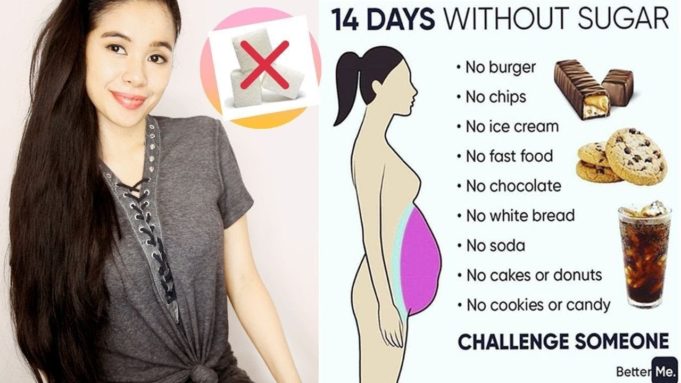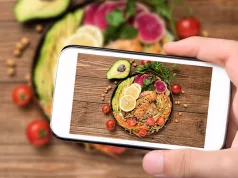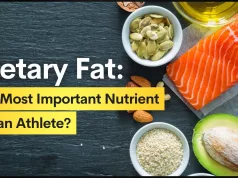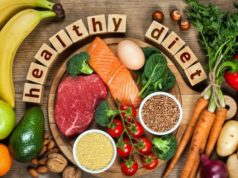How to cut sugar out of your diet? It’s a question that echoes in the minds of many, a sweet siren song tempting us with its sugary allure. But what if I told you that ditching the sugar high could lead to a healthier, happier you?
This journey might feel like giving up a beloved friend, but trust me, the rewards are sweeter than any sugary treat.
This guide will take you on a delightful expedition through the world of sugar, uncovering the hidden culprits in your pantry and offering a delicious roadmap to a sugar-free life. We’ll explore the science behind sugar cravings, arm you with strategies to combat them, and unveil the secrets of hidden sugars lurking in everyday foods.
Get ready to say goodbye to sugar-induced crashes and hello to a revitalized you!
Understanding Sugar Addiction: How To Cut Sugar Out Of Your Diet
Sugar, the sweet temptation that makes our taste buds sing, can be a tricky beast. While a little bit here and there is fine, excessive sugar consumption can lead to a vicious cycle of cravings and potential health problems.
Let’s dive into the science behind sugar addiction and how it impacts our bodies.
Sugar’s Impact on the Brain
Sugar cravings are not just a matter of willpower. They are driven by complex biological processes in the brain. When we consume sugar, our brains release dopamine, a neurotransmitter associated with pleasure and reward. This surge of dopamine creates a positive feedback loop, encouraging us to seek out more sugar.
Over time, our brains become accustomed to this dopamine rush, and we need increasingly larger amounts of sugar to achieve the same level of satisfaction. This is how sugar addiction develops.
Sugar’s Effect on Bodily Systems
Sugar consumption affects various bodily systems, both in the short and long term.
Short-term Effects
- Energy Spikes and Crashes:Sugar provides a quick burst of energy, but this is followed by a rapid decline in blood sugar levels, leading to fatigue, irritability, and cravings for more sugar.
- Inflammation:High sugar intake can trigger inflammation throughout the body, contributing to various health issues.
- Impaired Cognitive Function:Excessive sugar consumption can impair cognitive function, affecting memory, focus, and learning.
Long-term Effects
- Weight Gain and Obesity:Excess sugar intake contributes to weight gain and increases the risk of obesity, which can lead to a host of other health problems.
- Type 2 Diabetes:Chronic high sugar intake can lead to insulin resistance, a precursor to type 2 diabetes.
- Heart Disease:High sugar consumption can increase triglyceride levels and contribute to the development of heart disease.
- Non-Alcoholic Fatty Liver Disease:Excess sugar can lead to fat accumulation in the liver, increasing the risk of non-alcoholic fatty liver disease.
The Link Between Sugar and Chronic Diseases
The connection between sugar consumption and chronic diseases is well-established. Research consistently shows that diets high in added sugars increase the risk of developing:
- Type 2 Diabetes:A major health concern, type 2 diabetes is characterized by the body’s inability to regulate blood sugar levels effectively.
- Heart Disease:The leading cause of death worldwide, heart disease is linked to high cholesterol levels, high blood pressure, and inflammation, all of which can be exacerbated by excessive sugar consumption.
- Certain Cancers:Studies suggest a link between high sugar intake and an increased risk of certain types of cancer, including colorectal, pancreatic, and breast cancer.
“The more sugar you eat, the more you want to eat, and the more likely you are to get sick.”Dr. David Ludwig, renowned nutrition expert
Gradual Reduction Strategies
Going cold turkey on sugar can be tough, even for those with the strongest willpower. A more sustainable approach is to gradually reduce your sugar intake over time. This allows your body to adjust and helps you avoid feeling deprived, making it more likely you’ll stick to your goals.
A Step-by-Step Guide to Reducing Sugar
Think of it as a sugar detox, but a kinder, gentler one. Here’s how to make it work:
- Start Small:Begin by identifying the biggest sugar culprits in your diet, like soda, candy, and sugary cereals. Instead of eliminating them entirely, try cutting back by one serving per day.
- Swap Sweet Treats:Replace sugary snacks with healthier alternatives. Instead of a chocolate bar, opt for a piece of fruit, a handful of nuts, or a dark chocolate square with a higher cocoa content (at least 70%).
- Read Labels:Pay close attention to the ingredient list and the amount of added sugar in packaged foods. Choose products with less sugar, and opt for whole, unprocessed foods whenever possible.
- Cook More Meals at Home:When you cook at home, you have complete control over the ingredients. This allows you to make healthier choices and avoid hidden sugars in processed foods.
- Be Patient and Consistent:Reducing sugar is a journey, not a race. Don’t get discouraged if you slip up. Just get back on track the next day.
Sample Meal Plan with Gradually Decreasing Sugar Levels
Here’s a sample meal plan that demonstrates how to gradually reduce sugar throughout the day:
| Meal | Day 1 (High Sugar) | Day 2 (Medium Sugar) | Day 3 (Low Sugar) |
|---|---|---|---|
| Breakfast | Sugary cereal with milk, orange juice | Oatmeal with fruit and a drizzle of honey | Eggs with spinach and whole-wheat toast |
| Lunch | Sandwich on white bread with mayonnaise and sugary jam | Turkey lettuce wrap with hummus and veggies | Tuna salad on whole-wheat bread with mustard and a side of salad |
| Dinner | Pasta with tomato sauce and a side of garlic bread | Grilled salmon with roasted vegetables and brown rice | Chicken stir-fry with brown rice and a side of broccoli |
| Snacks | Chocolate bar, chips, fruit juice | Trail mix with nuts and dried fruit, yogurt with berries | Plain yogurt with berries, apple slices with peanut butter |
Managing Cravings and Avoiding Temptations
Sugar cravings can be powerful, but they’re often temporary. Here are some strategies to manage them:
- Distract Yourself:When a craving hits, try to distract yourself with an activity you enjoy, like going for a walk, reading a book, or calling a friend.
- Hydrate:Sometimes thirst can be mistaken for hunger or cravings. Make sure you’re drinking plenty of water throughout the day.
- Eat Regularly:Don’t skip meals, as this can lead to overeating and sugar cravings. Aim for regular, balanced meals and healthy snacks.
- Get Enough Sleep:When you’re sleep-deprived, your body produces more of the stress hormone cortisol, which can trigger cravings for sugary foods.
- Be Prepared:Keep healthy snacks on hand to satisfy cravings before they get out of control. This could include fruits, vegetables, nuts, or yogurt.
- Avoid Triggers:Identify situations that trigger your cravings and try to avoid them. For example, if you’re tempted to eat sweets after dinner, try brushing your teeth or doing a different activity instead.
Identifying Hidden Sugars
You’ve already tackled the sugar monsters lurking in your pantry, but those sneaky little sugar gremlins can hide in the most unexpected places. They’re like ninjas, silently infiltrating your favorite foods, making you crave more and more. It’s time to learn their secret code and outsmart them!
Common Food Labels That Indicate Hidden Sugars
Many food labels are designed to mislead, using clever wording to hide the sugar content. Here’s a cheat sheet to help you decipher the sugar code:
- Sugar, Sucrose, Dextrose, Fructose, Glucose, Maltose, Lactose: These are all straightforward names for different types of sugar.
- High Fructose Corn Syrup (HFCS): This is a sneaky one, often disguised as “corn syrup” or “fructose.”
- Syrup, Molasses, Honey, Agave Nectar: These are all forms of sugar, even if they sound natural.
- -ose: Any word ending in “-ose” (like “dextrose” or “maltose”) is usually a sugar.
Unexpected Sources of Sugar in Processed Foods
Sugar isn’t just in candy bars and soda. It’s lurking in the most unsuspecting places, like a mischievous gremlin playing hide-and-seek.
- Tomato Sauce: You might think it’s just tomatoes, but many brands sneak in added sugar to enhance the flavor.
- Bread: White bread often contains sugar to improve texture and taste, even if it’s not advertised as “sweet” bread.
- Yogurt: Beware of flavored yogurts, as they often have a significant amount of added sugar.
- Salad Dressings: Many salad dressings, especially creamy ones, are loaded with sugar.
Natural Sugars vs. Added Sugars
You might be thinking, “But fruits and vegetables have sugar too!” That’s true, but there’s a big difference between natural sugars and added sugars.
Natural sugars are found in whole, unprocessed foods like fruits, vegetables, and dairy products. They come packaged with fiber, vitamins, and minerals that help your body process them.
Added sugars, on the other hand, are sugars that have been added to foods during processing. They provide empty calories and can contribute to weight gain, diabetes, and other health problems.
Healthy Sugar Alternatives
Saying goodbye to sugar can feel like saying goodbye to your best friend. But fear not, sugar-free warriors! A whole world of delicious and healthy alternatives awaits. Let’s explore the sweet side of sugar-free living!
Natural Sweeteners
Natural sweeteners are derived from plants and often contain vitamins, minerals, and antioxidants. They can add sweetness to your food and drinks without the sugar rush and crash.
- Stevia: Stevia is a natural, zero-calorie sweetener extracted from the stevia plant. It’s about 200 times sweeter than sugar and has no impact on blood sugar levels.
Stevia is a great option for people with diabetes or those looking to manage their weight.
- Honey: Honey is a natural sweetener produced by bees from nectar. It contains antioxidants and trace amounts of vitamins and minerals.
Honey is a good source of energy and can be used in baking and as a topping for yogurt or oatmeal.
Cutting sugar out of your diet can be a sweet (and sometimes sour) journey. But don’t worry, you’re not alone! The recommended dietary allowance for sugar can help you navigate this sugary maze. Remember, moderation is key, and finding healthier alternatives can make the journey a lot less bitter.
So, ditch the sugar rush and embrace a balanced lifestyle!
- Maple Syrup: Maple syrup is a natural sweetener produced from the sap of maple trees. It’s a good source of antioxidants and minerals, including manganese and zinc.
Maple syrup can be used as a sweetener in coffee, tea, and pancakes.
- Agave Nectar: Agave nectar is a natural sweetener made from the agave plant. It’s about 1.5 times sweeter than sugar and contains a high amount of fructose.
Agave nectar is often used in baking and as a sweetener for smoothies and cocktails.
- Dates: Dates are a naturally sweet fruit that can be used as a sweetener in smoothies, baked goods, and energy bars.
Dates are a good source of fiber, potassium, and iron.
Artificial Sweeteners, How to cut sugar out of your diet
Artificial sweeteners are synthetic compounds that are designed to provide sweetness without calories.
- Aspartame: Aspartame is about 180 times sweeter than sugar and is often used in diet sodas, chewing gum, and other sugar-free products.
Aspartame has been linked to headaches and other health problems, but more research is needed to confirm these claims.
- Saccharin: Saccharin is about 300 times sweeter than sugar and is often used in diet sodas and other sugar-free products.
Saccharin has been linked to bladder cancer in some studies, but other studies have not found a link.
- Sucralose: Sucralose is about 600 times sweeter than sugar and is often used in diet sodas, baked goods, and other sugar-free products.
Sucralose is generally considered safe, but some people may experience digestive problems after consuming it.
Cutting sugar out of your diet can be tough, especially when you’re surrounded by sugary temptations. But trust me, it’s worth it! You’ll feel lighter, have more energy, and even lose weight. If you’re looking for tips on how to shed those extra pounds, check out this awesome resource: how to lose weight.
And remember, once you’ve kicked the sugar habit, you’ll be amazed at how much better you feel, both inside and out!
Sweetness Levels of Sugar Alternatives
Different sugar alternatives have different sweetness levels. This can be important to consider when substituting sugar in recipes.
| Sugar Alternative | Sweetness Level (compared to sugar) |
|---|---|
| Stevia | 200 times sweeter |
| Honey | 1.2 times sweeter |
| Maple Syrup | 1.5 times sweeter |
| Agave Nectar | 1.5 times sweeter |
| Aspartame | 180 times sweeter |
| Saccharin | 300 times sweeter |
| Sucralose | 600 times sweeter |
Recipes for Healthy Desserts
Here are a few recipes for healthy desserts using natural sweeteners:
- Date and Nut Energy Balls: Combine pitted dates, chopped nuts, and a pinch of cinnamon in a food processor. Roll into balls and enjoy.
- Stevia-Sweetened Chocolate Mousse: Combine unsweetened cocoa powder, stevia, and almond milk in a blender. Blend until smooth and creamy.
- Maple Syrup-Glazed Roasted Sweet Potatoes: Toss sweet potatoes with maple syrup, cinnamon, and nutmeg. Roast in the oven until tender.
Lifestyle Modifications
Think of your sugar reduction journey as a marathon, not a sprint. While tackling those sugary cravings head-on is crucial, making lasting changes requires a holistic approach. Lifestyle modifications play a vital role in supporting your sugar-free endeavors and creating a healthy foundation for a sugar-conscious life.
Importance of Regular Exercise and Stress Management
Regular exercise isn’t just about shedding pounds; it’s a powerful tool for managing sugar cravings and boosting your overall well-being. When you exercise, your body releases endorphins, natural mood elevators that can help combat stress and reduce sugar cravings.
Additionally, physical activity improves insulin sensitivity, making your body more efficient at utilizing glucose.Stress, on the other hand, can be a sugar-craving trigger. When you’re stressed, your body releases cortisol, a hormone that can increase your appetite and lead you to crave sugary treats for a quick energy boost.
Stress management techniques like meditation, yoga, or deep breathing exercises can help regulate cortisol levels and keep sugar cravings at bay.
Role of Sleep and Hydration in Controlling Cravings
Ever noticed how you crave sugary snacks when you’re sleep-deprived? That’s because lack of sleep disrupts your hormone balance, leading to increased levels of ghrelin (the hunger hormone) and decreased levels of leptin (the satiety hormone). This hormonal imbalance can make you feel hungrier and more likely to reach for sugary treats.Hydration is another often overlooked factor in sugar control.
Cutting sugar can feel like saying goodbye to your best friend, but trust me, there are plenty of other delicious ways to satisfy your sweet tooth. If you’re looking for a structured approach, you might want to check out how to do the keto diet , which focuses on healthy fats and protein.
Just remember, even with keto, moderation is key, and finding ways to enjoy life without relying on sugar is the ultimate goal.
Sometimes, what you perceive as a craving might be your body’s way of signaling thirst. Staying adequately hydrated can help curb cravings, improve digestion, and boost your energy levels.
Recipes and Meal Planning
Embarking on a sugar-free journey can feel daunting, but with a little creativity and planning, you can enjoy delicious and satisfying meals without sacrificing flavor. This section will equip you with sugar-free recipes and a sample meal plan, empowering you to create a healthy and fulfilling eating experience.
Sugar-Free Recipes
Here’s a collection of sugar-free recipes that will tantalize your taste buds without sending your blood sugar soaring:
- Savory Breakfast:Start your day with a hearty and protein-packed sugar-free breakfast. Enjoy a frittata with spinach and feta cheese, a veggie omelet with avocado, or a bowl of Greek yogurt with berries and a sprinkle of cinnamon.
- Lunchtime Delights:Fuel your afternoon with satisfying sugar-free lunch options. Opt for a salad with grilled chicken or fish, a hearty soup, or a veggie wrap with hummus.
- Dinnertime Adventures:Explore a world of sugar-free dinner possibilities. Roast chicken with roasted vegetables, salmon with asparagus, or a lentil stew with whole grains are excellent choices.
- Sweet Treats:Don’t let the absence of sugar stop you from enjoying sweet treats. Experiment with sugar-free desserts like chia pudding with berries and nuts, dark chocolate bark with almonds, or a fruit salad with a drizzle of honey.
Sample Meal Plan
Here’s a sample meal plan that demonstrates how to incorporate sugar-free meals throughout the day:
| Meal | Sugar-Free Options |
|---|---|
| Breakfast | Greek yogurt with berries and a sprinkle of cinnamon |
| Lunch | Salad with grilled chicken and avocado |
| Dinner | Roast salmon with roasted vegetables |
| Snack | Dark chocolate bark with almonds |
Healthy Swaps
Transform your favorite dishes into sugar-free delights by making these healthy swaps:
- Sugar:Replace sugar with natural sweeteners like stevia, erythritol, or monk fruit.
- Processed Foods:Opt for whole, unprocessed foods like fruits, vegetables, lean proteins, and whole grains.
- Sweetened Beverages:Choose water, unsweetened tea, or sparkling water with a squeeze of lemon or lime.
- Sauces and Dressings:Look for sugar-free versions or make your own with healthy ingredients.
Resources and Support
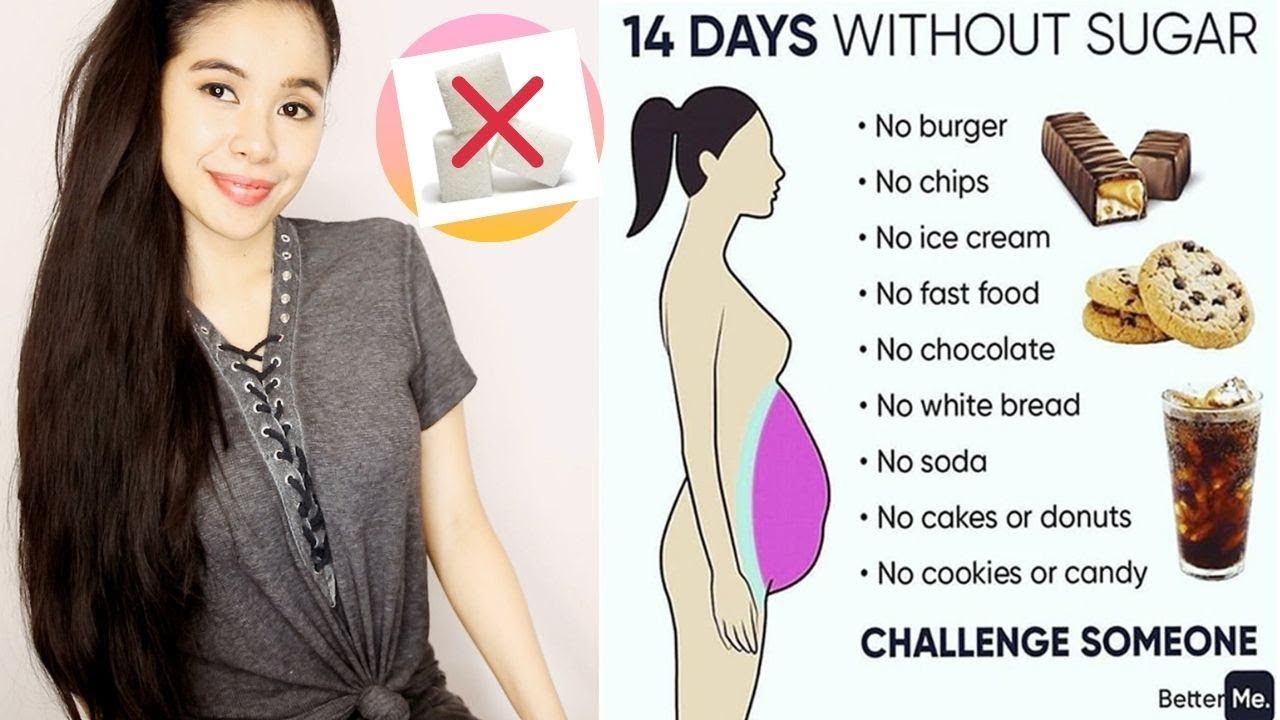
You’ve taken the first steps on your sugar-free journey, and it’s time to tap into a world of support and resources. You’re not alone in this! There are tons of people who have successfully reduced sugar in their diets and are ready to share their wisdom and cheer you on.
Reputable Organizations and Resources
There are countless organizations and resources available to help you navigate the sugar-free landscape. Here are some reputable sources to get you started:
- The American Heart Association:A trusted source for information on heart health, including the dangers of excessive sugar consumption and tips for reducing your intake.
- The American Diabetes Association:Offers valuable insights on the link between sugar and diabetes, along with resources for managing blood sugar levels.
- The National Institutes of Health (NIH):Provides comprehensive information on nutrition and health, including sugar consumption and its impact on the body.
- Sugar-Free Living Communities:Online forums and social media groups dedicated to sugar-free living, where you can connect with others who share your goals, swap recipes, and find support.
Inspiring Stories of Sugar Reduction
It’s always motivating to hear about others who have successfully conquered sugar cravings and achieved their health goals. Here are a few inspiring stories:
- John, a 45-year-old software engineer,struggled with chronic fatigue and weight gain. After reducing his sugar intake, he experienced a surge in energy, lost weight, and improved his overall health. His story highlights the transformative power of reducing sugar.
- Sarah, a 28-year-old teacher,was diagnosed with prediabetes. She drastically reduced her sugar intake, adopted a healthy diet, and managed to reverse her condition. Her journey shows the potential of sugar reduction in preventing serious health issues.
- Mark, a 32-year-old entrepreneur,was addicted to sugary snacks and drinks. He decided to cut sugar cold turkey and experienced a dramatic improvement in his mental clarity, focus, and mood. His experience demonstrates the positive impact of sugar reduction on brain function.
Finding Support and Accountability
Surrounding yourself with a supportive network can make a world of difference in your sugar-free journey. Here are some tips for finding accountability and staying motivated:
- Join a support group:Connecting with others who share your goals can provide encouragement, advice, and a sense of community. Look for online groups or in-person meetings.
- Find a buddy:Enlist a friend or family member to join you on your sugar-free journey. You can motivate each other, share recipes, and celebrate milestones together.
- Track your progress:Keep a food diary or use a tracking app to monitor your sugar intake and identify areas for improvement. Seeing your progress can be a powerful motivator.
- Reward yourself:Celebrate your achievements with non-food rewards, such as a massage, a new book, or a day at the spa. This can help you stay motivated and avoid cravings.
Closure
So, are you ready to embark on this sugar-free adventure? Remember, it’s not about deprivation, but about discovering a new world of flavor and well-being. With a little knowledge, a dash of determination, and a whole lot of delicious recipes, you’ll be saying goodbye to sugar cravings and hello to a healthier, happier you.
After all, life’s too sweet to be stuck in a sugar rut!
Essential Questionnaire
Is it okay to have a cheat day while cutting sugar?
It’s okay to have a cheat day, but try to keep it to a minimum and make sure you’re not overdoing it with the sugar. The key is to be mindful and not let one cheat day derail your progress.
How long does it take to break a sugar addiction?
It varies from person to person, but most people experience a significant reduction in cravings within a few weeks of cutting back on sugar. Be patient, and remember that everyone’s journey is different.
What are some healthy snacks to satisfy sugar cravings?
Fruits like berries and apples, a handful of nuts, dark chocolate (in moderation), and a small amount of plain yogurt are excellent choices.
Can I still enjoy desserts while cutting sugar?
Absolutely! There are plenty of delicious sugar-free desserts using natural sweeteners like stevia, erythritol, or monk fruit. You can also find healthy versions of your favorite treats.
What if I slip up and eat something sugary?
Don’t beat yourself up! Just get back on track with your plan. One slip-up doesn’t undo all your progress.















